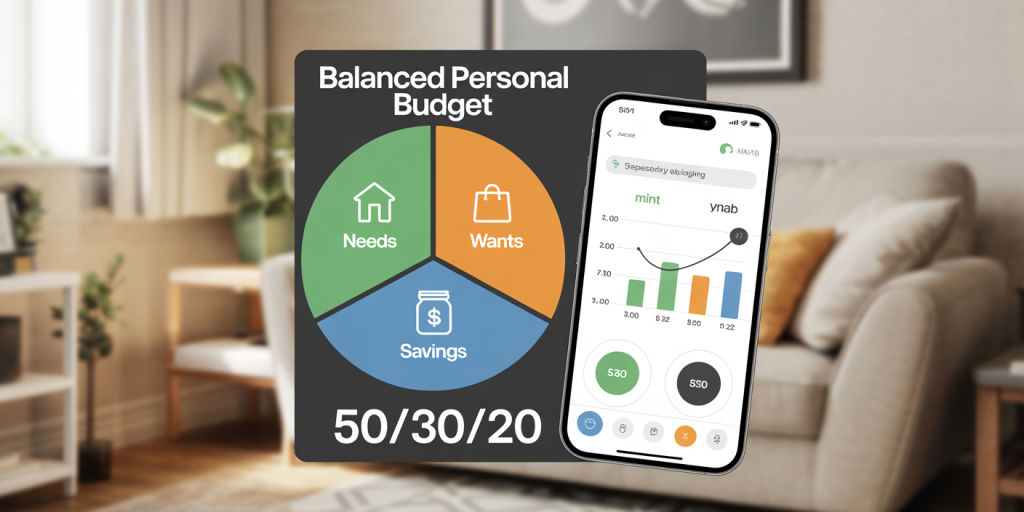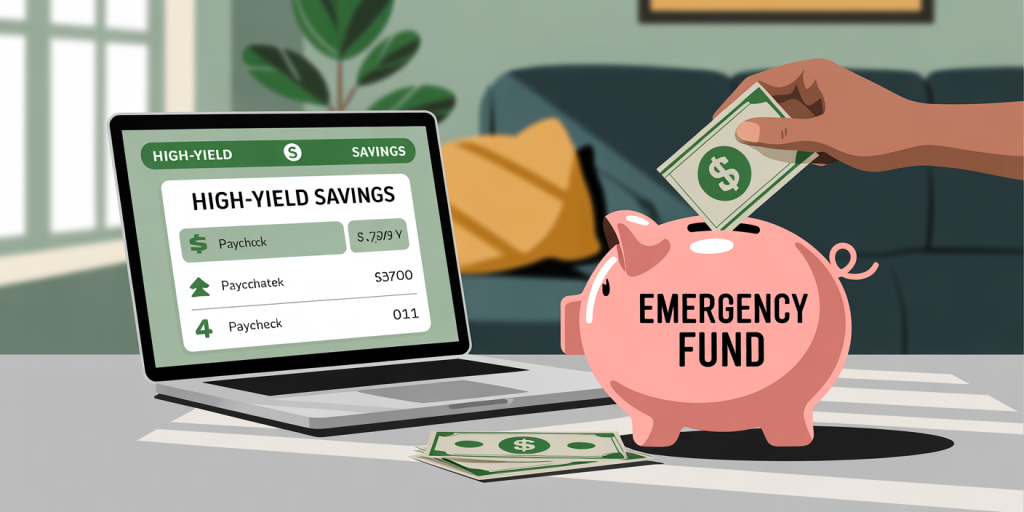Achieving financial prosperity is a journey that begins with managing your paycheck effectively. For many individuals, living paycheck to paycheck is the norm, but it doesn’t have to be permanent. Transitioning from simply surviving on your income to thriving and building wealth requires intentional planning, disciplined habits, and a strong understanding of financial principles. This article provides a comprehensive roadmap for transforming your earnings into a foundation of lasting prosperity.

Navigating the Paycheck-to-Paycheck Trap
Living paycheck to paycheck means your income barely covers your expenses, leaving no room for savings or investments. According to a 2023 survey by the Federal Reserve, about 60% of Americans can cover a $400 emergency expense with cash or savings immediately. This indicates that a majority remain vulnerable to financial shocks, underscoring the widespread paycheck-to-paycheck lifestyle.
This financial fragility stems from multiple factors, including rising living costs, inadequate income growth, and lack of budgeting. For instance, a single parent in a metropolitan area might earn $45,000 annually, yet find themselves with minimal savings due to high rent and childcare costs. Recognizing the limitations of this cycle is essential before adopting strategies to break free and create wealth.
Budgeting: The Cornerstone of Financial Transformation
A well-structured budget is the foundation of turning a paycheck into prosperity. Budgeting not only tracks income and expenses but also prioritizes financial goals. One practical approach is the 50/30/20 rule, which allocates 50% of income to needs, 30% to wants, and 20% to savings or debt repayment. For example, if your monthly income is $3,000, $600 should go directly toward building your savings or reducing liabilities.

In a case study of over 1,000 individuals who implemented budgeting tools like Mint and YNAB, 70% reported an increase in their savings rate within six months. This illustrates how a structured budget empowers control over spending habits. By replacing impulsive expenses with intentional financial moves, you refine your capacity to build wealth steadily.
| Budget Component | Percentage of Income | Monthly Amount ($3,000 Income) |
|---|---|---|
| Needs | 50% | $1,500 |
| Wants | 30% | $900 |
| Savings/Debt | 20% | $600 |
Building an Emergency Fund: The First Step Toward Financial Security
An emergency fund acts as a financial buffer that prevents unexpected expenses from derailing your progress. Financial advisors usually recommend saving three to six months’ worth of living expenses. For an individual with monthly costs of $2,000, this means accumulating between $6,000 and $12,000.
Consider the case of Thomas, a 32-year-old graphic designer. Thomas maintained a tight budget and allocated 15% of his income monthly toward an emergency fund. Within 18 months, he built a $9,000 nest egg. When his car unexpectedly required $2,500 in repairs, Thomas avoided going into debt and kept his financial plan intact. This example highlights the importance of emergency savings in maintaining financial stability.
E-fund savings can be facilitated by automated transfers to a high-yield savings account, improving both discipline and returns. According to Bankrate, the average interest rate on high-yield savings accounts in early 2024 is around 3.5%, significantly higher than traditional savings accounts, which typically offer below 0.1%.
Debt Management: Turning Liabilities into Leverage
Paying down debt is critical when transitioning from paycheck to prosperity. High-interest debts, especially credit card balances, drain resources and limit your ability to save. The average credit card interest rate in the U.S. is approximately 20.3% as of 2024, making it essential to tackle these balances aggressively.
Two popular strategies for debt reduction are the debt snowball and the debt avalanche methods. The snowball method focuses on paying off the smallest balances first to build momentum, while the avalanche method prioritizes debts with the highest interest rates to minimize total cost. According to a 2022 study in the Journal of Finance Behavior, the avalanche method can save an average borrower $1,200 in interest over two years compared to the snowball method.
For example, Maria had $15,000 in credit card debt spread across three cards with rates of 18%, 22%, and 15%. By focusing on the 22% card first (avalanche method), she reduced her overall interest payments faster than if she had prioritized smaller balances (snowball method). After 18 months, she was debt-free and redirected payments into savings and investments.
Investing: The Pathway to Wealth Accumulation
Once debt is manageable and an emergency fund is established, investing becomes essential to grow your wealth. According to the U.S. Bureau of Labor Statistics, the average annual return of the S&P 500 index over the past 30 years has been around 10%, substantially outpacing inflation and savings account yields.
Diversifying investments across stocks, bonds, real estate, and retirement accounts spreads risk while maximizing return potential. For instance, a 30-year-old who invests $500 monthly in a diversified portfolio with an average 7% annual return could accumulate approximately $713,000 by age 65, assuming compound interest.

| Investment Option | Average Annual Return | Typical Risk Level |
|---|---|---|
| U.S. Stocks (S&P 500) | ~10% | Moderate to High |
| Bonds | ~4-6% | Low to Moderate |
| Real Estate | ~8-12% | Moderate |
| Savings Account | ~0.1-3.5% | Very Low |
Robo-advisors and employer-sponsored 401(k) plans are excellent tools for new investors, providing automated portfolio management and tax advantages. Consider John, who started contributing $200 a month to his 401(k) at 25, matched by his employer at 50%. By 55, his portfolio value exceeded $400,000, illustrating the power of consistent investing and compounding returns.
Mindset and Financial Literacy: The Intangible Assets
Beyond numbers and strategies, cultivating the right mindset and enhancing your financial literacy are paramount for long-term prosperity. Studies from the National Endowment for Financial Education show that individuals who engage in ongoing financial education are 30% more likely to save regularly and invest wisely.
An abundance mindset encourages viewing money as a tool rather than a limitation. Real-world examples include entrepreneurs who reinvest earnings instead of spending on luxury items prematurely. Sara Blakely, the founder of Spanx, famously invested her early profits back into her business rather than indulging in lifestyle inflation, growing her company into a billion-dollar empire.
Additionally, financial education courses or mentorship programs can dramatically improve decision-making and reduce the impact of emotional spending. For example, the “Financial Peace University” program by Dave Ramsey has helped millions develop budgeting skills and break free from debt cycles.
Planning for the Future: Sustaining Prosperity Through Change
Financial prosperity is not a static destination but a dynamic journey requiring adaptation to life’s changes. Planning for major life events such as buying a home, starting a family, or preparing for retirement ensures financial resilience.
Diversifying income sources through side hustles or passive income streams further enhances financial security. The gig economy data from Statista reveals that approximately 36% of U.S. workers participated in gig work in 2023, supplementing their paychecks and accelerating their path to prosperity.
In addition, leveraging technology and tools like automated investing, financial planning apps, and continuous learning platforms will keep your financial strategy aligned with evolving economic conditions.
Long-term growth also involves estate planning, insurance, and tax-efficient strategies to preserve and pass wealth. For instance, contributing to Roth IRAs or HSAs offers tax advantages that maximize savings efficiency. According to Fidelity Investments, people who actively use tax-advantaged accounts accumulate 23% more wealth by retirement than those who do not.
—
Building lasting financial prosperity from a paycheck involves multifaceted strategies encompassing budgeting, saving, debt management, investing, mindset cultivation, and forward planning. By committing to disciplined habits and embracing ongoing financial education, individuals can break free from the paycheck-to-paycheck cycle and achieve sustainable wealth. With purposeful action and informed decisions, your paycheck can transform from a monthly necessity to a powerful engine of enduring prosperity.

Deixe um comentário